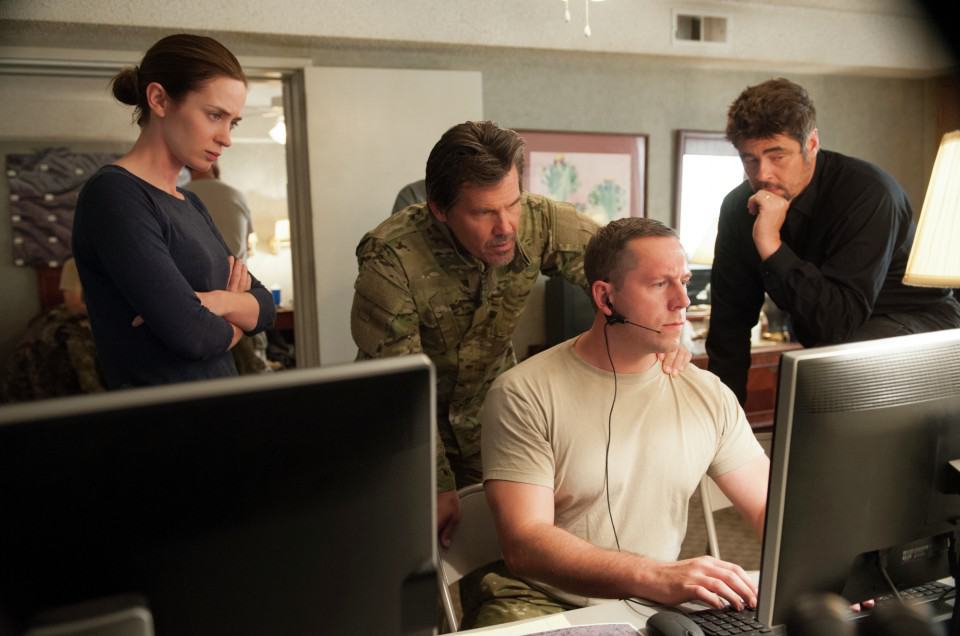Dennis Villeneuve likes to make you anxious. Two years after his relentlessly suspenseful Prisoners and the Toronto-based nail-bitter Enemy, Sicario, Villeneuve’s most recent thriller about the interminable war on drugs, is a master class in cinematic tension, and is riddled with more anxiety than a Woody Allen protagonist. Taking place on the border of Mexico and the United States, those seeing Sicario — whether it be during the 40 annual Toronto International Film Festival, or after its impending wide release on October 2nd — will be seated firmly on the border of “I really have to pee,” and “I don’t want to leave my seat.”
As much a tale about the ethical and moral ambiguity of the US’ war on the Mexican drug trade as it is about the people who fight it, Sicario, while narratively obscure and uneven, gleans tautness and tenseness from its otherwise archetype-ridden screenplay. The story follows Kate Macer (Emily Blunt), a naïve, tactically talented FBI agent at the helm of a crack kidnap response team, as she’s recruited to a joint task force with a sandal-wearing, chummy government operative (Josh Brolin) and a laconic, anti-cartel prosecutor-turned-gunman (Benicio del Toro). The unlikely trio, disparate in worldviews but equally lethal with a firearm, are bound together by their mission, which takes them to the destitute city of Juarez in pursuit of an elusive cartel kingpin.
The particulars of the mission are sketchy at best, and entirely absent at worst. We share the green and semi-puerile perspective of Kate. The camera lingers outside of windows as conversations carry on silently on the other side, and scenes cut away before their completion, conjuring the paranoid impression that something is always being withheld – that we’re being kept in the dark about the true nature of the border-busting quest and the true nature of these characters.
Nerves are wound even tighter during Sicario’s action set pieces, which all start with an “I can’t take it anymore” build-up and erupt into lightning-quick bursts of raw violence. Whether they be strategic firefights or brutal hand-to-hand combats, these sudden bursts of havoc are rendered all the more uneasy by composer Jóhann Jóhannsson’s bass-and-string heavy score. Sicario’s corker comes in its final stretch when the film glides into an intense night time tunnel raid, shot exclusively using night and thermal-vision lenses by the incomparable (and criminally Oscar-less) Roger Deakins. Cinematographically, Deakins crafts a triptych of intimacy: tight framing captures Kate and her team at their most vulnerable and morally corrupt, hovering aerial shots convey the deplorable regional conditions where the drug trade runs rampant, and point-of-view camera work embroils the spectator in the gritty, frightening, and bleak field work of drug enforcement.
Unfortunately, Sicario doesn’t stick the landing. In its final 25 minutes, Sicario veers into Zero-Dark Thirty and No Country for Old Men territory, displaying sequences that are exemplary in isolation but unsatisfying and out of place within the film’s broader narrative framework. The film’s technical virtuosity, however, more than makes up for its relative unevenness, and reasserts that when it comes to Denis Villeneuve, there’s absolutely nothing — or, perhaps, absolutely everything — to be anxious about.


